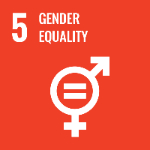From Where I Stand: “Despite improvements, there is a long way to go for gender sensitive content in Ethiopian media”
Ms. Dureti Tadesse is Director of the Women, Children and Social Affairs Directorate in the Ethiopian Media Authority, a government entity tasked with regulating the media and advertising sector with the mission of promoting a pluralistic and responsible media and advertising sector through enabling regulation, capacity building and Partnership. UN Women Ethiopia has been working with the authority in a bid to promote participation of women in leadership and decision-making positions in public life through positive portrayal of women by the media.
Date:


Our collaboration with UN Women comes with our quest to improve women’s portrayal in the Media. A few years back, we have undertaken an assessment on gender in the media. As a result, we realized that journalism is a male dominated field, majority of journalists being male, in content also there was underrepresentation and sporadic inconsistent coverage of gender issues.
UN Women accepted our proposal to work on this and in 2017, we started providing trainings for media personnel and advertisement professionals. In collaboration with UN Women, We produced 4 manuals for gender sensitive reporting. The first one “Gender sensitive Media Guideline” is translated into Affan Oromo language, trainings were delivered using a training manual developed based on the guideline.
The other guideline is on ‘Gender Sensitive Advertisement’ and series of trainings were provided targeting advertisement professionals and executives of advertising agencies. Previously, women models were used in TV advertisements of household items and products such as detergent, cooking utensils, catering businesses etc in domestic settings. Now that has improved a lot and male actors are being used to promote similar products and women portrayed as businesswomen and professionals at work. I believe our awareness promotion and capacity building work on gender sensitive advertisement has brought about this change.
Working on positive portrayal of women in advertisements was a challenge because privately owned media often are highly commercialized and give more emphasis on profits than gender representation. Repeated trainings and engagement with them have improved this a lot.
Despite improvements, there is a long way to go for gender balanced media content. One reason for this may be high staff turnover within the media industry. Previously trained and capacitated personnel leaving the media institutions. Covid-19 also has created a gap because trainings were halted. From the authority’s side, there was a classification of the gender directorate as ‘support function’ and not core business for the organization. Because of that the budget allocated for our department was small. The media institutions are many, licenses are still being given out adding new TV and radio stations and online media to the list of media houses that are regulated by the authority and our department as well. Hence, gender aspect of the monitoring was challenging. This in return created backpedaling in the media in terms of gender sensitive programming.
For a long time there have been programs in the media that goes against the media law and reinforces stereotype against women that insinuate women have lower status in the society. We hope to work more on this with support from UN Women.
Previously, coding sheet for media monitoring hasn’t had separate code for gender. Gender issues were embedded in ‘vulnerable groups’ code that includes women, children, persons with disabilities, youth. Moreover, monitoring experts were not gender aware, creating a hindrance to identify negative portrayals of women/ gender insensitive reports and programs. Then gender /women’s issue was later given a separate sheet based on our concern on this. We also trained the personnel on gender sensitivity in media.
The recent warning given to a TV station that broadcasted insensitive ‘rape joke’ and mocking of GBV is result of this gender consideration and efforts from the monitoring personnel in reporting such instances.
There are other similar instances where violations of the media policy regarding content including online media when it comes to degrading women. Some serious cases are under legal processes and court proceedings ongoing.
Religious media are also among the new categories that are now subjected to monitoring and regulation by our entity. Hence, we will have to revamp our capacity to closely monitor for contents that belittle and discriminate against women. This effort requires collaboration and concerted effort especially on digital/online and religious media.
The other area that needs focus are community media, we have around 62 community radio stations. We trained 52 of them with technical and financial support from UN Women. We hope to continue reaching the newly established community radios to enable them produce gender sensitive media programs and gender balanced view of women in media.”


UN Women Ethiopia, in collaboration with the Ethiopian Media Authority has implemented “Enhancing the Role of Media in Promoting Gender Equality and Women in Leadership” Project from August 2017 until January 2021. Under the project 464 editors, journalists, advertisement professionals, Ethiopia Media Authority staff were reached through capacity building based on tailored training modules. This project was made possible by generous support from the governments of Denmark and Sweden.